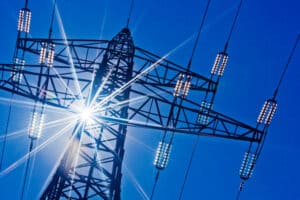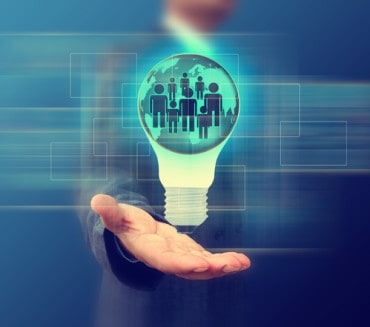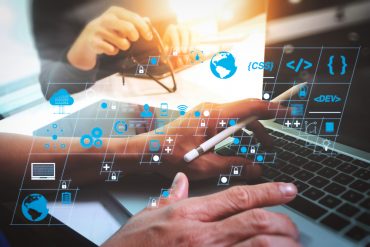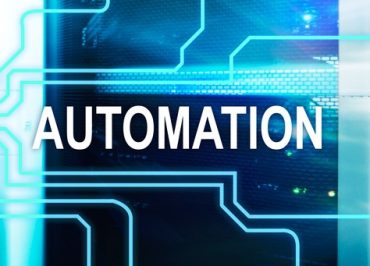
A combination of necessity and opportunity have prompted the move to digital grids in the energy industry.
As the global energy landscape shifts to renewable energy, electrical grids will need to adapt. Renewable energy does not evenly generate power, causing influxes in energy that need to be evened out. Many homeowners generating their own power also complicates the grid as power to homes can flow in multiple ways. It’s an intense balancing act.
All of this is happening against the backdrop of retiring workforces taking decades of grid insights with them.
The move to digital in the energy industry can help address these challenges while bringing utilities increased efficiency, cost savings, performance improvements, and business agility. For example, with real-time data and insights, a utility can allow its power equipment to run at maximum potential by performing asset upkeep based on how data says the equipment is performing. Many utilities still maintain a time-based schedule for the upkeep on equipment, which is inefficient and, at times, costly. As we add more to the grid – the White House recently announced $5 billion in loans to build more infrastructure – asset maintenance turns unwieldy without digital tools.
The right information can also help a utility reroute power as needed to keep operations online while assets are taken offline as in the event of a storm. In addition, as the landscape continues to evolve, real-time data and insights can help utilities better understand their own emissions levels and ESG obligations as they chart their course to net zero.
That’s all to say: A grid powered by enterprise technology is key to our sustainable future. The difficulty is how to get there. It’s easier to manage when you break it into three steps.
See also: Digital Technologies and the Grid: The Importance of Good Timing
Step 1: Identify the opportunity
Utilities could digitize almost every part of the grid. It is easy for grid operators or the IT department to get overwhelmed by trying to tackle everything at once. But the beauty in implementing modern, digital solutions is that companies can start small.
The place to start is with identifying the outcomes a utility would like to achieve. Oftentimes, this is addressing the most salient pain points. For instance, downtime associated with failing assets and equipment. In this case, deploying a digital asset management solution would allow operators to collect more data more frequently and automatically, making asset monitoring more effective. But grids often have thousands, if not millions, of assets. To keep from biting off more than it can chew, utilities should limit that scope to first focus on the most critical assets, like transformers.
Consider as well the type of technology available to solve the issue. Adding a layer of AI and advanced analytics to the asset data, for example, will also provide utilities with recommendations on corrective and preventative actions.
By identifying the opportunity for the enterprise technology first, companies don’t risk falling into the trap of seeing a cool new piece of technology and immediately adopting it. Instead, it’s important to identify the opportunity where digital tools can help and then take the grid out of the analog era that way.
Step 2: Set up the right infrastructure
To take advantage of digitized assets, it’s important to have the right infrastructure in place. This includes both having the right people behind the scenes to support and champion the technology as well as the right communication, including training and the proper cultural infrastructure.
Much like data silos, operations in utilities tend to be isolated from one another. This is a result of the legacy business structures and the systems they have historically employed. The field, the boardroom, the billing office, and more all operate in their respective bubbles – they implement processes and systems to support the needs of their function, choose which information they share and when, and make other choices without necessarily considering the needs of other departments. Then because departments operate in different ways, field workers may resist process changes and learning how to use new digital tools.
Some may oppose IoT technology to provide safety and efficiency improvements to field workers. Others may dislike the idea of training new workers on systems they themselves don’t know very well. Executives may resist new system adoption out of dependence, fear of change, and seemingly ambiguous return on investment.
The traditional utility has built-in obstacles to digital transformation. To break down these barriers and create the right infrastructure, utilities need to forge connections. Successful digital transformation requires data to be shared and consumed widely across the organization. It allows more groups to contribute to the full picture and simultaneously fosters the buy-in needed to successfully complete actions.
Step 3: Evaluate and analyze the results
Once a utility is digitalized, data empowers them to make better decisions. A lot of functions and processes can be automated with a digitalized grid, but it’s important to make sure the technology is set up in a way that optimizes a utility’s processes and workflows so that the right benefits can be gained.
Getting lost in a “sea” of data is a very real concern when implementing digital solutions for a grid – ask any control room operator. “Alarm overload” happens when there’s not a good structure in place for managing alerts from technology solutions. A grid operator is faced with a seemingly endless flow of red alerts popping up on monitors signaling the need to stop, look, interact and clear alarms. It creates a sort of operational attention deficit. This not only results in an inefficient use of the operator’s time but also an increased risk that a critical alert will get lost somewhere in the chaos.
Prioritizing what is important for an operator to be alerted to should be identified upfront and can help ensure that the data and outputs from the digitization are being evaluated and implemented. In this way, utilities can take full advantage of the technology.
A combination of necessity and opportunity have prompted the move to digital in the energy industry. Utilities have no choice but to digitalize if they are to navigate the new, carbon-neutral energy landscape. This transition has not been smooth and uniform for many; however, it is clear that digitally transforming the business and the workforce creates long-term success for utilities.
The leap to digitalization can seem like a daunting task, but if approached one step at a time, the realized rewards and the future potential gain of operational improvements will far exceed the pain.





























